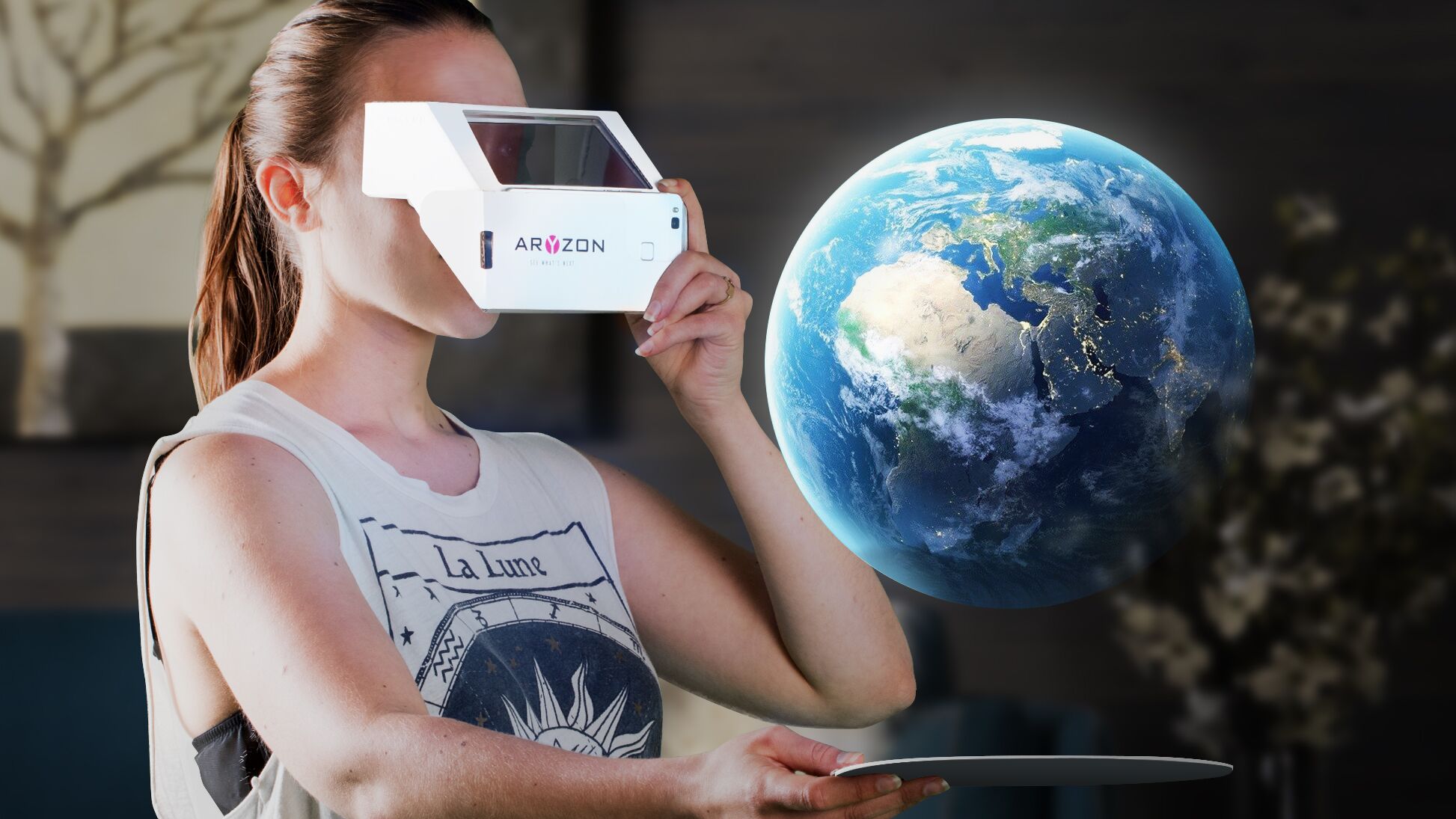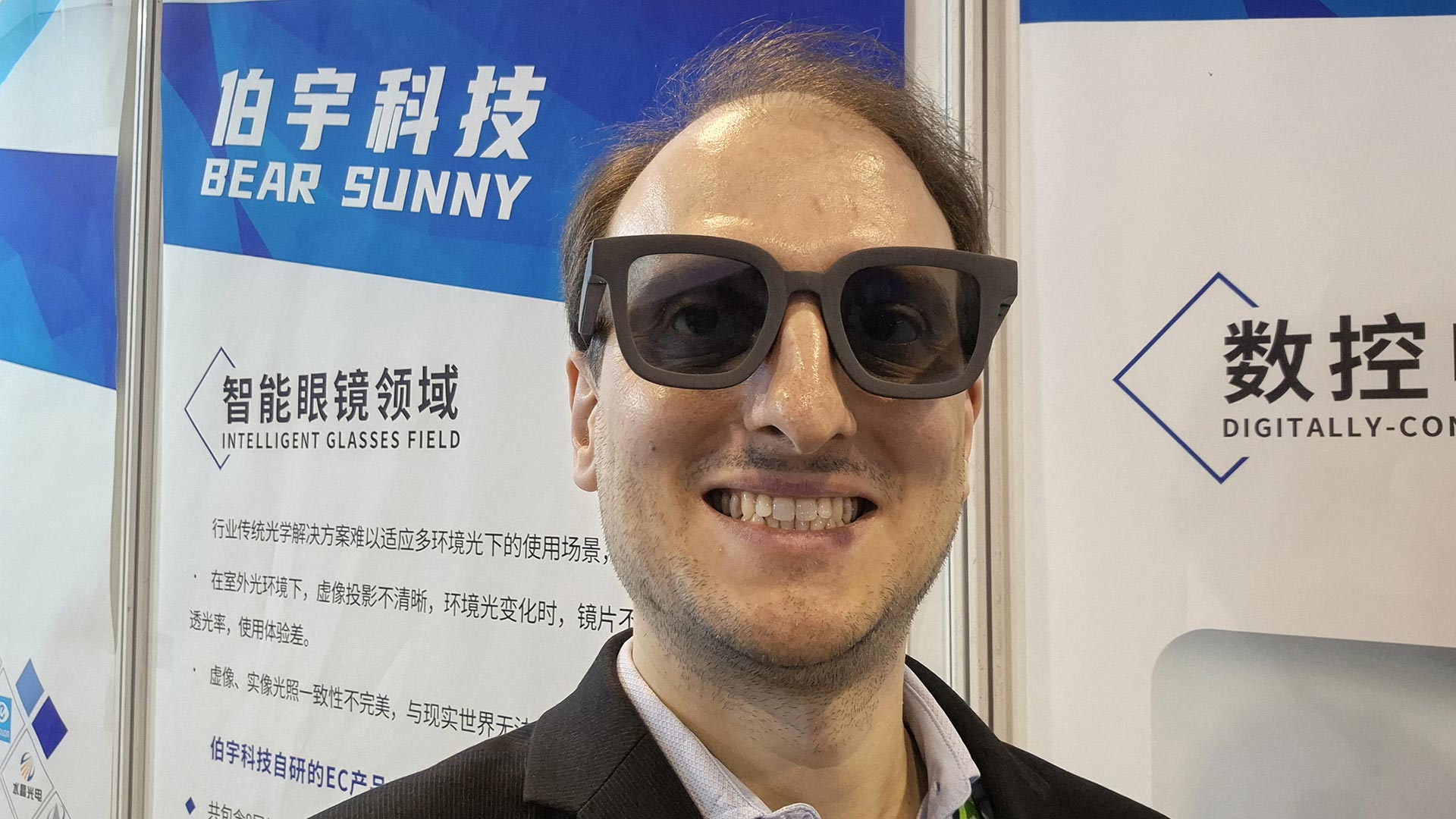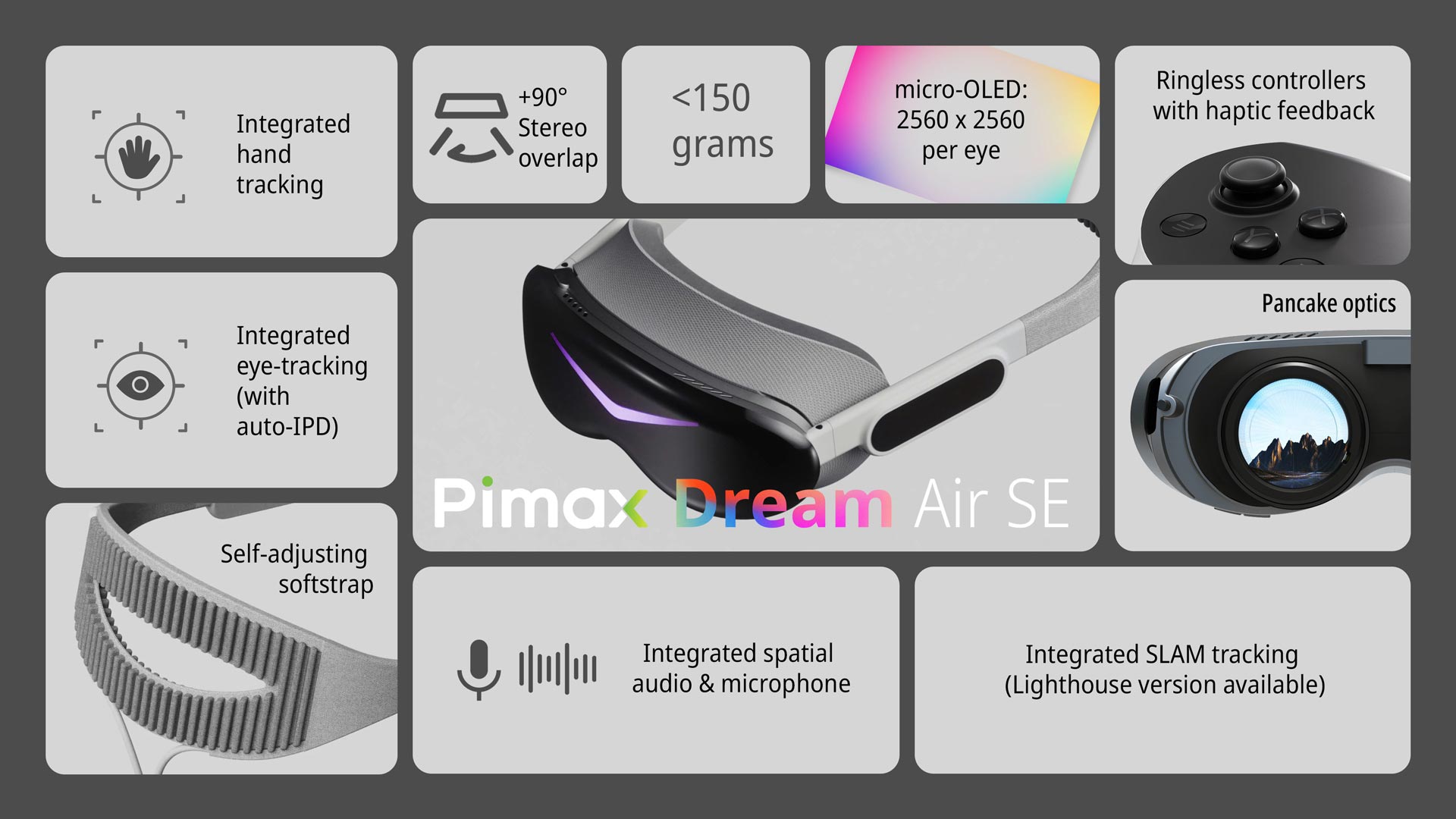Aryzon, the Cardboard of Augmented Reality
These days a group of Dutch guys have launched a very interesting Kickstarter campaign for a product called Aryzon. This product is intriguing and I bet that it could become quite popular among makers and AR/VR enthusiasts.

But what is Aryzon? Well, it is the cardboard of augmented reality.
We all know what the Cardboard is and how it is born. When Facebook was about to buy Oculus in 2014 for 2-3 billion dollars (2 + various benefits), Google decided to mock them creating a cardboard version of a virtual reality viewer, something super cheap that could have similar functionalities to the Oculus headset. The Cardboard was just a joke, but it started having an unexpected success and so Google decided to shape better their cardboard program.
Currently Cardboard is the most sold VR headset (more than 10 million units sold) and the most used for marketing purposes. It is something every innovator has bought to dip his/her toe in the virtual reality ecosystem. Cardboard has been fundamental to help the widespread of virtual reality, because it offers a decent VR experience for a super low price. Often it is even free, because it is part of some marketing initiative or because some companies want to help the spread of VR giving cardboards for free, as VuDream is doing. Then there are also deluxe cardboards that cost something like 30-40$, with advanced features and more resistant materials.
So, Cardboard has been super-important because it has been able to offer good-enough VR for a very low price. But, what about AR? AR too is a new disruptive technology with high hardware costs: a Microsoft HoloLens costs $3000 and a Meta Glass is around $1000 (then there’s Magic Leap that costs, well, some fluff). Some AR cardboard would be amazing, to help people dip their toe in AR, to experiment with the technology and understand its potential. Something offering a decent experience for few money. Well, this is what Aryzon is trying to do.
As you can see from the above video, Aryzon is something like a strange Cardboard where you put your smartphone in and then you see AR through a glass. How is this possible? Well, basically the smartphone is able to detect some markers in the area it’s looking at and put virtual objects on it. This is something that is already common in a lot of augmented reality applications that employ libraries like Vuforia (I’m wondering if this headset internally uses Vuforia, at least for the prototypes they’ve made). If you’ve ever played Pokemon Go, you know what I’m talking about: a virtual object superimposed onto the image of the real world seen from the smartphone camera.

In this case my best guess is that on the smartphone screen you actually have only the virtual object and not the surrounding real world imagery too (we’ll see in a while why). So it is like in Pokemon Go you would see only the Pokemon you have to catch and nothing else (all black around him), with the Pokemon staying coherent with its world position when you move the smartphone. Then this image of the virtual element present on the smartphone screen passes through some optical magic: some mirrors and lenses transform this flat image in an image suitable for binocular augmented reality, that gets projected on that semi-trasparent screen that you see on the top of the headset.
This way, when you look with both eyes through the semi-transparent screen of Aryzon, you see both the real world (because the screen is transparent) and the virtual object in the position of the world you were expecting them (thanks to Vuforia-or-similar-library magic). On the smartphone screen it is actually rendered only the virtual elements because through the transparent glass you already see the real world, so we only need to put the virtual elements on the glass lenses (this is how all AR glasses works). Furthermore, notice that on the transparent glass two images gets actually projected: one for the left and one for the right eye, so to provide stereoscopy. Again, I’m guessing if for prototypes they’ve used Cardboard+Vuforia SDK, that offers similar functionalities.
Guys of Aryzon have also implemented some sample interactions mechanics with the virtual world. Being a cheap headset, it doesn’t rely on hands interactions like its competitors (HoloLens ones are still rough, to be honest), but on buttons that are placed near the markers and that get activated if the buttons area is occluded. Just to continue my speculation, this is a well-known feature of Vuforia…
Aryzon guys have also made some cool apps to showcase how their device could be used. One demo I particularly liked is this one:
About its specifications, knowing that the greatest issues of the best AR glass out there are price and FOV, you may wondering how much is big Aryzon FOV. The question is steadly answered in the company’s FAQs:
The horizontal field of view (FoV) is approximately 35 degrees for a single eye, a combination of both eyes increases this towards 42 degrees. The vertical FoV is 20 degrees. Notice that the field of view is dependent from the size of your phone screen as this casts the holographic image. The given FoV is for a screen diagonal of 5,5″.
Not that much, but again, we’re talking about a cheap headset, not about a high-end one. Even the fact that the system is based on markers is a huge nuisance, but it is justified by the type of device (and founders are thinking about removing this constraint if in the long term Tango smartphones will become popular).
And the price? Well, marvelous, just $29 if you pledge them on Kickstarter. And if you buy more than one, you’ll have also discounts! So, for 1% of the price of a Hololens you’ll be able to try a good-enough AR experience. In September you should get the reward, as a flat package that you have to assemble yourself. Honestly, due to the small team and high request numbers, my guess is that they’ll have some delays, but it’s an happy problem 🙂

About developers like me… the device will surely let you visualize the 3D models you prefer, but the SDK for this device is still not clear. They talk about a developer SDK usable through Unity. My hope is that we could also use Vuforia to develop Aryzon apps. I really hope so, because this would mean for us using an SDK we already know and that we already know that works well. Whatever the SDK will be, I seriously appreciate the fact that this device could let us experiment how it is developing for AR glasses, without owning a high-end one.
The idea is f**king genious, in my opinion. AR missed something to let people try how an AR glass is, without making them spend lots of money. And considering the marketing power of Cardboard, I already envision marketing companies giving branded Aryzon headsets for free, to let people try immersive augmented reality at home. Because yes, Pokemon Go has taught people what AR is, but just flat-AR, not the immersive true AR.
The concept of the device is very simple, in fact one of the FAQ says like this:
Why hasn’t anybody done this before?
We have no idea! In the AR world the focus is mainly on the high end developments with products like the Microsoft Hololens and Magic Leap. As Industrial Design students we noticed this gap and came up with the Aryzon Kit to experience AR and make it accessible to everyone.
These guys are genious: after having seen their idea, I ask myself: why didn’t I think this before? I’m looking for creating a new startup, in the end…

I like the Aryzon project because I think that it can really be an idea able to disrupt the AR market, offering a low-end alternative to professional devices like HoloLens or Meta 2. We’ll have to see if these guys will be able to handle all the success they’re having and to envision all the business possibilities of what they’ve created. In the meantime the project has been funded in 24 hours and at the time of writing has already doubled the required amount of money. The founders are thinking about stretch goals to add… we’ll see with what they’ll come out… I hope they’ll add some head mount… because using this device hands-free could really increase its usability a lot.
I’m going to back their Kickstarter campaign right now (let’s support smart AR/VR startuppers!) and I invite you to do the same. But before, please, share this article and subscribe to my newsletter!
UPDATE: Aryzon has answered to me by email and about Vuforia and their SDK, they told me this:
Aryzon will continue with the Aryzon headset to offer this to developers and everyone wishing to experience AR. Also for companies we hope to provide a full AR solution, to stimulate AR overall!
To answer your question in the article about Unity/Vuforia, we use both Unity as Vuforia ourselves, however we want the developer to being able to use their own methods which they prefer, we do not want to restrict anything. We will give support in this were needed.
(Header image by Aryzon)
Disclaimer: this blog contains advertisement and affiliate links to sustain itself. If you click on an affiliate link, I'll be very happy because I'll earn a small commission on your purchase. You can find my boring full disclosure here.




Love this article!!
Thanks! Glad you liked it 🙂
Hi Tony, I was waiting for a response here but I can’t even see my comment published yet o.O. Do you discarded it for some reason or you just missed it? Thank you! (you can disapprove this one with no worries)
Hello Matias! I’ve never discarded a comment of yours! I guess some cockroaches ate it! :O
Can you please tell me again what you asked me?
Haha thought so, no problem. Here goes my comment again from Disqus (I still see it as “pending” there, weird)
“Hey Tony, few months ago I’ve backed the Zapbox kit (search for Zapbox on Kickstarter, link gets trimmed in the comment :S) which is also a stereo AR cardboard headset. How do you think it differs with the Aryzon? I guess the way Zapbox presents the images is not real stereoscopy as it has only one rgb camera but kinda simulated stereo. But donno, looking at Aryzon same happens, right? Or does all that mirroring magic and stuff make it more sophisticated than a single camera? Also, a fov of 35 degrees is not enough for an immersive experience. But yeah it’s way better than the 30 degrees of the Hololens (which fov really s***ck) and way cheaper, so will think about pledging this one also”
Wow, didn’t know about Zapbox, what a valuable comment!
Well, the main difference is in how the visuals of the real world are offered. Zapbox is like using Cardboard with Vuforia: you have a screen-through augmented reality, since you see the AR through your smartphone screen. It’s like playing Pokemon go… cool, but it is not “true AR”.
With Aryzon, you look at real objects directly, since you see the world through a transparent glass, exactly as you do with Hololens… it is far more natural (no resolution of FPS problems, since you see the world directly with your eyes!) and less prone to symptoms like motion sickness! Due to this reason, you don’t need a stereo camera, since you just see the real world with your two stereo-cameras, i.e. your eyes.
FOV is not adequate, but it’s ok for a cheap experience… I’m more angry with a $3000-device offering me a limited fov.
I think this gadget is great because it emulates completely an AR glass, but in a cheap way.